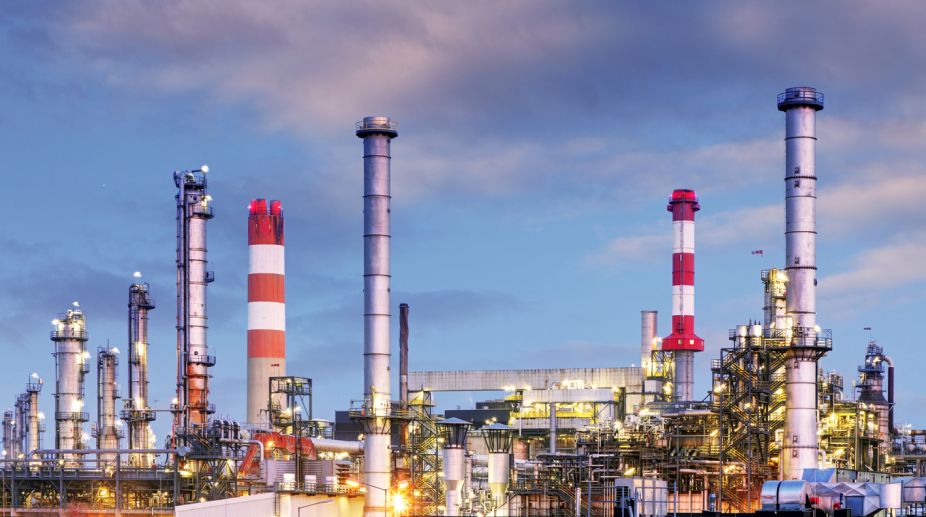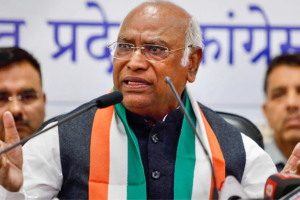Oil producer ONGC has said it may miss the June 2019 target for starting production from its Krishna Godavari basin block due to new policies like GST and local purchase preference rules, including the one that mandates state-owned firms to source domestic iron and steel for an infrastructure project.
Clarifying on its last week’s filing to stock exchanges, Oil and Natural Gas Corp (ONGC) said the new policies it had cited for a possible delay pertained to local purchase preference policy, steel policy and GST policy.
Advertisement
“The new policies concerning oil and mining sector, as referred in the reply of ONGC to NSE and BSE, though not amply clarified in the reply, were pertaining to policies like purchase preference policy, steel policy, GST policy etc. and not regulatory policy,” ONGC said in a statement.
While the ONGC Board had in March 2016 approved a USD 5.07 billion investment for bringing oil and gas discovered in the KG-DWN-98/2 or KG-D5 block in Bay of Bengal to production, new policies were formulated last year.
The Union Cabinet in May 2017 approved a policy that will prefer sourcing of domestic iron and steel for infrastructure projects by state-owned companies in a bid to boost Make in India.
Also, a policy has been formulated to give public enterprises purchase preference if their bid is within 10 per cent of the lowest price. Goods and Services Tax (GST) was also rolled out in July 2017.
Last week, ONGC informed stock exchanges that after its Board in March 2016 approved the field development plan (FDP), it began procuring goods and services such as drilling, completion of wells, creation of production and processing facilities and transportation pipelines.
“Meanwhile, introduction of various new policies concerning the oil mining sector led to deferment of tendering activities. As of now, the project schedules are being maintained as planned. However, due to very complex nature of the project, there is a possibility that the schedules may get exhausted which will only be known at a later date,” it had said.
The company had not given details of the policy changes.
The delay will be for the second time due to government policies. ONGC had in 2014 announced plans to start gas production from 2018 and oil by 2019 but a final investment decision was made contingent upon government approving a remunerative price for the deepsea block as the prevalent rates were uneconomical.
But it was not before March 2016 that the government announced a new pricing formula for difficult areas, giving developers more than double the domestic rate.
Immediately after that ONGC Board approved the investment plan for Cluster-II group of discoveries in KG-D5.
The 7,294.6 sq km deepsea KG-D5 block has been broadly categorised into Northern Discovery Area (NDA – 3,800.6 sq km) and Southern Discovery Area (SDA – 3,494 sq km).
The NDA has 11 oil and gas discoveries while SDA has the nation’s only ultra-deepsea gas find of UD-1. These finds have been clubbed in three groups – Cluster-1, Cluster-II and Cluster-III.
Gas discovery in Cluster-I is to be tied up with finds in neighbouring G-4 block for production but this is not being taken up because of a dispute with RIL over migration of gas from ONGC blocks.
From Cluster-II, a peak oil output of 77,305 barrels per day is envisaged within two years of start of production. Gas output is slated to peak to 16.56 million standard cubic meters per day by end-2021.
Cluster-2A mainly comprises oil finds of A2, P1, M3, M1 and G-2-2 in NDA which can produce 77,305 bpd (3.86 million tonnes per annum) and 3.81 mmscmd of gas.
Cluster 2B, which is made up of four gas finds – R1, U3, U1, and A1 in NDA – envisages a peak output of 12.75 mmscmd of gas. Peak output is likely to last 7 years.
Cluster-3 is the UD-1 gas discovery in SDA. UD-1 lies in water depth of 2400-3200 meters and its development would be taken up after an appropriate technology is found.











